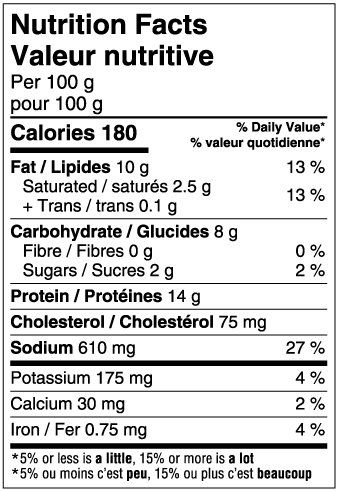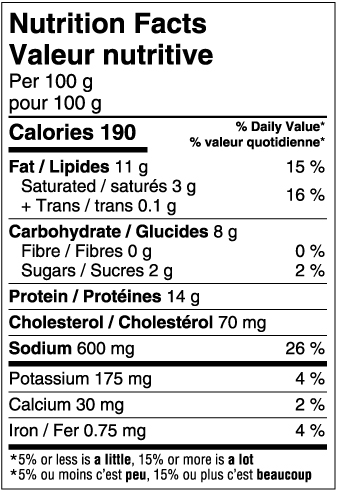What are Coconut Aminos?

Key Takeaways:
- Coconut aminos is a savory, slightly sour and salty condiment made from the naturally fermented sap of the coconut tree, mixed with sea salt. It’s also known as “coconut sauce” or “soy-free seasoning sauce.”
- Coconut aminos are suitable for individuals with soy or gluten allergies or sensitivities.
- Coconut aminos are a good source of essential minerals and B vitamins, though used in small amounts.
- Complies with Paleo dietary guidelines and is safe for individuals with gluten intolerance or celiac disease.
- Coconut aminos have roots in ancient Southeast Asian culinary traditions, where the coconut tree is revered as the “tree of life.” It gained popularity in the Western world alongside the rise of gluten-free, soy-free, and paleo diets.
- Unopened, it can last up to three years in a cool, dark pantry. Once opened, it should be refrigerated and used within six months.
- Versatile in cooking, it can be used in stir-fries, marinades, salad dressings, dipping sauces, glazes, and soups.
Coconut aminos has taken the culinary world by storm as a soy-free, gluten-free, and vegan alternative to soy sauce. This versatile and flavorful condiment has a rich history, numerous health benefits, and can be used in a wide array of recipes. In this blog post, we will dive deep into what coconut aminos is, its benefits, history, and how it’s made.
What are Coconut Aminos?
Coconut aminos, also called “coconut sauce” or “soy-free seasoning sauce,” is a savory, slightly sour, and salty condiment made from the sap of the coconut tree. To make coconut aminos, coconut palm sap is naturally fermented, mixed with sea salt, and aged to create a unique flavor profile that has made coconut aminos a popular choice for those seeking a healthier alternative to traditional soy sauce. With its umami-rich taste, coconut aminos can be used as a marinade, dressing, dipping sauce, or seasoning in various dishes.
Coconut aminos stand out not only for their distinctive taste but also for their health benefits and versatility in culinary applications. This condiment is a boon for individuals with dietary restrictions, as it is soy-free, gluten-free, and lower in sodium compared to traditional soy sauce, making it suitable for those with soy or gluten allergies or sensitivities. The fermentation process enriches coconut aminos with a range of amino acids, which are the building blocks of proteins, thus contributing to its nutritional value. Its subtly sweet, tangy flavor profile adds depth to a wide array of recipes, from stir-fries and sushi to dressings and sauces. Coconut aminos provide a complex umami flavor that enhances the overall taste of dishes without overpowering them. This makes it an excellent choice for those looking to experiment with flavors or seek healthier alternatives without compromising on taste. As awareness of healthy eating grows, coconut aminos continue to gain popularity among health-conscious consumers and culinary enthusiasts alike, seeking to elevate their dishes with natural, flavorful ingredients.
Add more coconut products to your diet! Find Grace Foods Coconut Water at a Store Near You
The Health Benefits of Coconut Aminos
Coconut aminos, offer several health benefits that make them an appealing choice for health-conscious individuals:
Soy-free and Gluten-free
People with soy or gluten allergies, sensitivities, or dietary restrictions can safely use coconut aminos as an alternative to soy sauce.
Low Sodium Content
Coconut aminos contain 73% less sodium than traditional soy sauce, making it a healthy alternative for those monitoring their salt intake due to high blood pressure.
Rich in Amino Acids
Coconut aminos contain 17 different types of amino acids, which are essential for various bodily functions, including muscle repair, immune support, and brain function.
Vitamins and Minerals
Coconut aminos are a source of essential minerals such as potassium, magnesium, and zinc, as well as B vitamins. However, they are not a great source of nutrients because coconut aminos is used in small amounts.
Lowers Blood Sugar Levels
With a glycemic index of 35, coconut aminos won’t cause a rapid spike in blood sugar levels, making them suitable for those with diabetes or those looking to manage their blood sugar levels.
Dietary Benefits
- Paleo-Friendly: As a natural and minimally processed option, coconut aminos comply with Paleo dietary guidelines.
- Gluten-Free: For individuals with gluten intolerance or celiac disease, coconut aminos offer a safe and flavorful alternative to soy sauce.
- Vegan: Being plant-based and free of animal products, coconut aminos are a perfect fit for vegan dietary patterns.
- Low-Carb Friendly: With its minimal carbohydrate content, coconut aminos are a suitable choice for many low-carb diets.
The History of Coconut Aminos
The use of coconut aminos can be traced back to ancient Southeast Asian culinary traditions. For centuries, people in countries like the Philippines, Indonesia, and Malaysia have been using the sap from coconut trees to create various condiments, beverages, and sweeteners. In Southeast Asia, the coconut tree is often referred to as the “tree of life” due to its versatile nature and the numerous products that can be derived from it.
Coconut aminos gained popularity in the Western world as more people began seeking healthier, natural alternatives to soy sauce. This coincided with the rise in popularity of gluten-free, soy-free, and paleo diets.
Coconut aminos have become a sought-after alternative to soy sauce for those looking to reduce their sodium intake or avoid soy and gluten. This flavorful condiment is derived from the sap of coconut trees and boasts a rich, umami taste that makes it a versatile addition to many dishes.
How to Make Coconut Aminos
Learn the process that goes into making coconut aminos the traditional way—virtually unchanged for thousands of years.
Step 1: Harvesting the Coconut Sap
The process of making coconut aminos begins with the coconut tree, specifically the coconut palm sap that flows within the tree. This sap is collected from the flower bud stem through a process called “tapping.” Tapping involves making a small incision in the flower bud stem and positioning a collecting vessel beneath the cut. The sap then flows out of the tree and into the container.
This process must be done carefully because damaging the tree can hinder future palm sap production. Local farmers skilled in the art of tapping typically perform the task, ensuring the tree remains healthy and continues to produce sap for years to come.
Step 2: Fermentation
Once the sap has been collected, it undergoes a natural fermentation process. The sap is transferred to large, open-air vats, where it is exposed to the elements. The warm tropical climate in coconut-producing regions, such as the Philippines and Indonesia, provides the perfect environment for fermentation.
During this stage, naturally occurring microbes aid in breaking down the sugars in the sap, transforming its taste and texture. This fermentation process can last anywhere from a few days to several weeks, depending on factors such as temperature and humidity. As the sap ferments, it darkens in color and develops the rich, savory flavor characteristic of coconut aminos.
Step 3: Filtering and Cooking
After the fermentation process is complete, the sap is carefully filtered to remove any impurities. The filtered sap is then cooked for several hours to further concentrate the flavors and evaporate the liquid. This cooking process also maintains the nutritional content of the sap and preserves its complex flavor profile.
Step 4: Add Sea Salt
Once the sap has been cooked down, it’s time to add sea salt to the mix. The addition of sea salt not only enhances the flavor of the coconut aminos but also helps to extend the sauce’s shelf life. High-quality, unrefined sea salt is best.
Step 5: Bottling and Aging
The final step in the production process is bottling and aging the coconut aminos. The sauce is poured into bottles and sealed to ensure freshness. The coconut aminos are then left to age for a brief period, allowing the flavors to meld and become a vinegar-like substance.
Shelf Life
Coconut aminos have a remarkably long shelf life due to their natural fermentation process and added sea salt. When stored in a cool, dark pantry, an unopened bottle can last up to three years. Once opened, refrigeration is recommended to preserve its quality for up to six months. Remember to check the expiration date and inspect for signs of spoilage before use.
Culinary Uses and Recipes
Coconut aminos, a naturally fermented product made from coconut palm sap and sea salt, offers a unique and versatile culinary experience. With a flavor profile similar to soy sauce, but boasting a sweeter, less salty taste, it’s a perfect substitute in countless recipes. This versatility makes it a favorite for chefs and health-conscious individuals alike, especially in Canada where coconut aminos Canada is gaining popularity.
Recipes with Coconut Aminos
1. Stir-fry Sensation: Enhance the savory flavors of vegetable or protein stir-fries with a splash of coconut aminos. It adds a balanced umami depth without overpowering other ingredients.
2. Masterful Marinades: Craft delightful marinades for tofu, chicken, or fish. Combine coconut aminos with ginger, garlic, and honey for an irresistible Asian-inspired twist.
3. Salad Dressing Delight: Create a healthy and flavorful salad dressing by combining coconut aminos with olive oil, lemon juice, and your favorite herbs.
4. Dipping Sauce Perfection: Perfect for spring rolls, dumplings, and tempura, mix coconut aminos with a touch of chili and lime for a zesty and satisfying dip.
5. Glazes and Sauces: Coconut aminos add a unique depth and sweetness to glazes and sauces for meats and vegetables.
6. Soup and Broth Enhancer: Elevate the savory notes of your favorite soups and broths with a touch of coconut aminos.
Final Thoughts
The many health benefits of coconut aminos is a testament to the versatility and natural abundance of the coconut tree. By harnessing the power of nature and ancient harvesting techniques, this delicious and nutritious sauce continues to be used generation after generation as a healthy flavour enhancer.
With its umami flavor profile, numerous health benefits, and suitability for even the most strict dietary preferences, it’s no wonder that coconut aminos have become a popular choice for those seeking a healthier alternative to traditional soy sauce. So, the next time you drizzle coconut aminos over your favorite dish, take a moment to appreciate the journey this remarkable condiment has taken to reach your plate.






